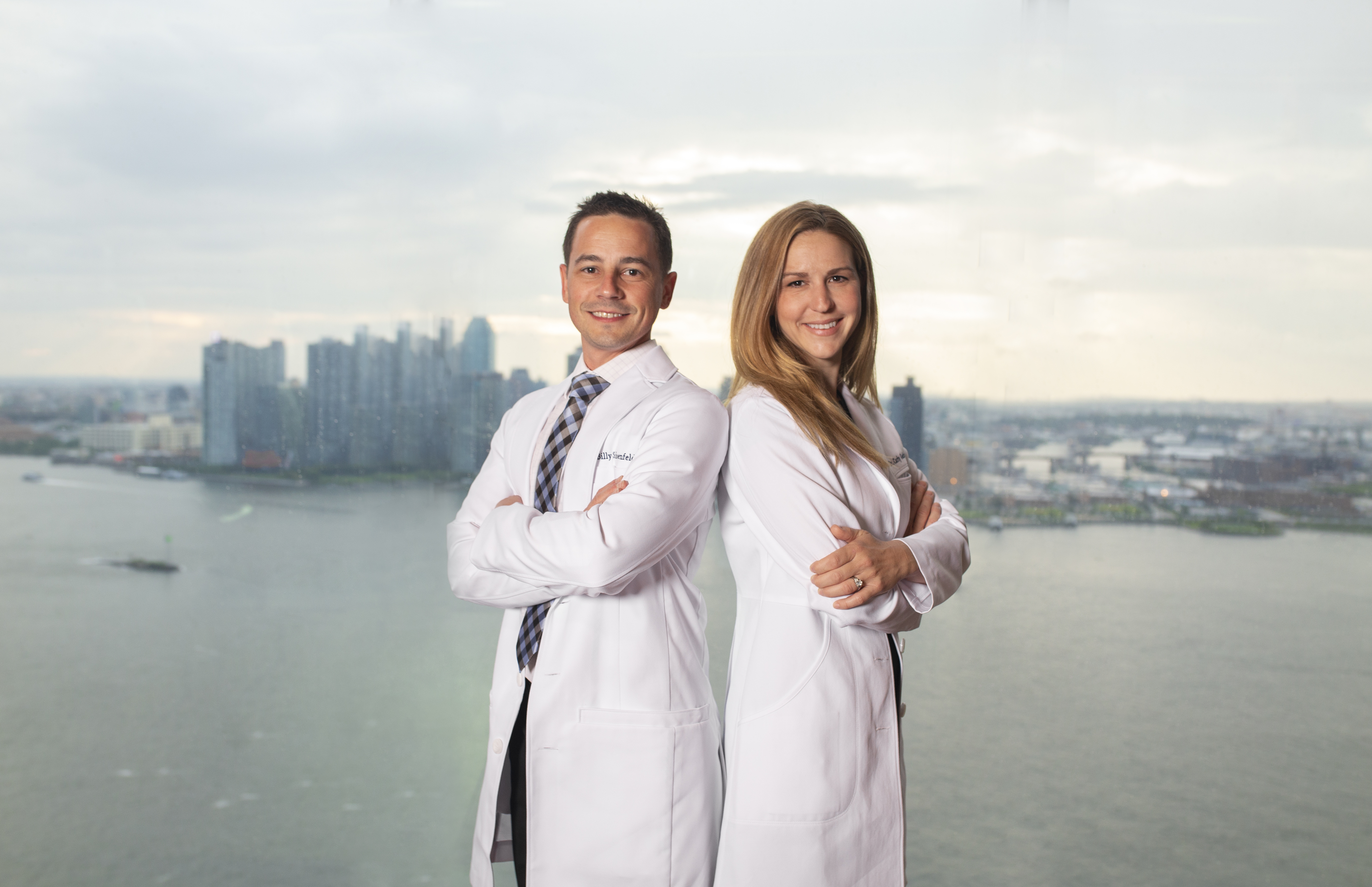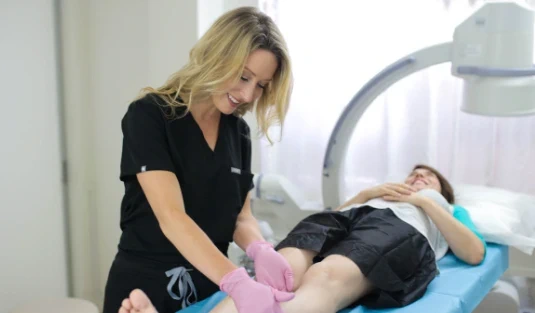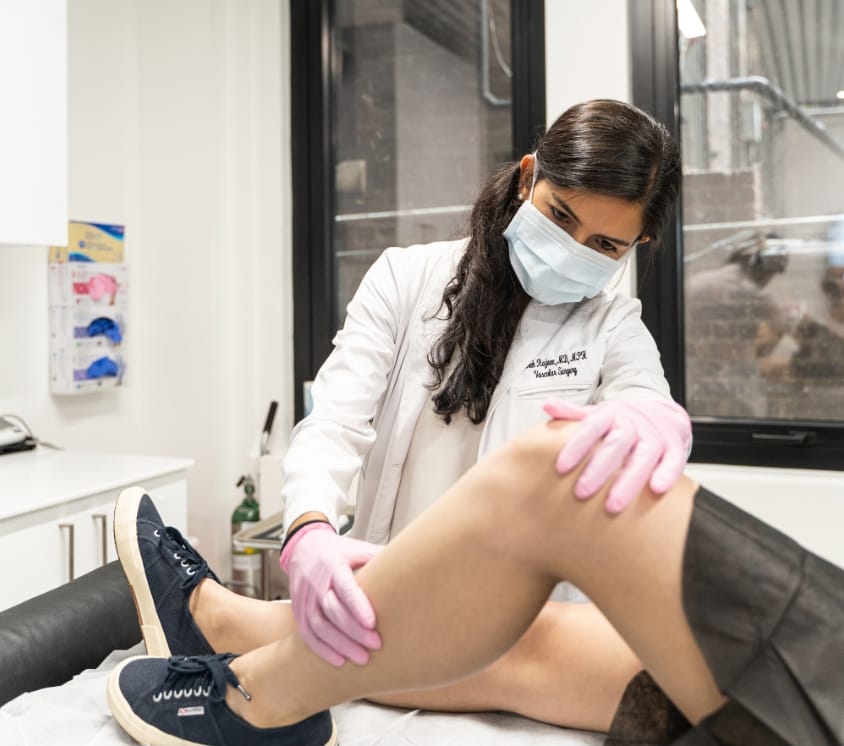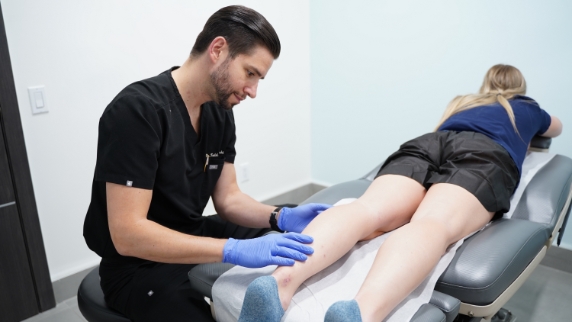What Does TED Hose Stand For? Compression Stocking Information
If you’re concerned about your tired, heavy legs, perhaps you’ve read about vein doctors and vein experts mentioning TED hose and compression stockings. TED hose stands for “thromboembolic-deterrent,” but read more to find out why doctors, especially vein doctors, recommend TED hose and what other options exist if you find TED hose uncomfortable. As a potential patient of a vein doctor, you want undertake your due diligence to find out about TED hose and compression stockings. Since you may be unfamiliar with these devices, it’s only natural to wonder, “What does TED hose stand for?”
What led you to begin researching TED hose and compression stockings? You likely are suffering from varicose veins or spider veins, which are beginning to cause physical discomfort, as well as looking unsightly. Vein experts will agree that TED hose and compression stockings can be a first step to consider before consulting a vein doctor, but note that they do not treat the underlying condition that may be causing your varicose veins, spider veins, and heavy-feeling legs.
Vein experts, such as the highly-trained vein doctors at the Vein Treatment Centers of New York and Vein Treatment Centers of New Jersey applaud your efforts to do independent research to understand what TED hose and compression stockings entail. While they would still encourage you to see a vein expert for varicose vein treatment and spider vein treatment, it’s important for patients to be well-informed about ways that they can improve their health and well-being. Here, we’ll look at what TED hose stands for, the difference between TED hose and compression stockings, and why you should consult a vein expert to see if there is an underlying condition that cannot be treated by TED hose or compression stockings alone.

What Does TED Hose Stand For?
TED is an acronym that means “thrombo-embolic-deterrent.” This means that TED hose stands for hosiery that prevents blood clots. Patients who have just been through an operation are sometimes at risk for blood clotting. Those who are bed-ridden can also develop blood clots due to lack of movement, which can lead to other serious complications.
This is where TED hose can help. It provides compression, mimics the act of walking, and keeps blood circulation flowing better. TED hose are made for invalid or bed-ridden individuals who are unable to ambulate independently. Unless you have recently undergone a surgery where you are immobilized, or if you are confined to bed, vein doctors recommend that TED hose are not the solution for your varicose veins or spider veins. But now you know the answer to the questions: “What does TED hose stand for.”
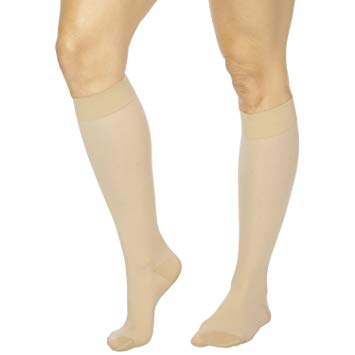
What Are Compression Stockings?
Compression stockings look a bit like your everyday pantyhose. The difference between compression stockings and TED hose is that compression stockings squeeze your ankle area, and not the whole leg. These are ideal for individuals who are able to walk, but are prone to varicose veins, spider veins, and leg fatigue.
One of the underlying causes of varicose veins and spider veins is a condition called chronic venous insufficiency, where vein valves become weakened and are unable to “push” blood back to your heart. This causes the blood to pool in the vein, resulting in varicose veins and spider veins. Vein experts recommend compression stockings for individuals who are looking for temporary relief from the heaviness and pressure caused by varicose veins, but note that they do not address the underlying condition of venous insufficiency.
Depending on your needs, you can buy compression stockings in different compression ratings and ranges such as: 15-20 mmHg, 20-30 mmHg, 30-40 mmHg. You can usually wear one pair of compression stockings for up to six months.
What is Better: Natural or Non-Invasive Treatments?
While compression hose may provide temporary relief from tired, aching legs, they do not treat the underlying issue of chronic venous insufficiency. TED hose are specifically designed for patients who are immobilized after a surgery or are bed-ridden, so their usefulness to treat varicose veins or spider veins is not recommended for most individuals. Although many people seek natural treatments like compression stockings to avoid surgery, vein experts now offer several fresh, minimally-invasive treatments. These treatments are not only used to address the issue of varicose veins and spider veins, but also attack chronic venous insufficiency through a variety of cutting-edge methods.
What are the Benefits of Consulting with a Vein Expert?
Since compression hose and TED hose do not address the underlying issue of chronic venous insufficiency, your painful varicose veins and spider veins will continue. The vein doctors at the Vein Treatment Center of New York and Vein Treatment Center of New Jersey are highly-qualified to give you an expert consultation, and can also recommend varicose vein removal treatments that are best suited for you.
Whether you require Sclerotherapy, or other treatments such as Radiofrequency Ablation (ClosureFast), VenaSeal, ClariVein, Phlebectomy, or laser treatments, our vein doctors can guide you to the treatment that is best suited to remove your varicose veins. Not only are our vein experts Board certified and specialized to perform these cutting-edge treatments, they also listen to their patients to develop a varicose vein removal plan that works with their needs.
Now that you’ve discovered what TED hose stands for, as well as some facts about compression hose, we encourage you to set up a consultation with a vein expert. The vein doctors at the Vein Treatment Center of New York and Vein Treatment Center of New Jersey will work to treat your tired, heavy legs, as well as address the underlying issue of chronic venous insufficiency.








